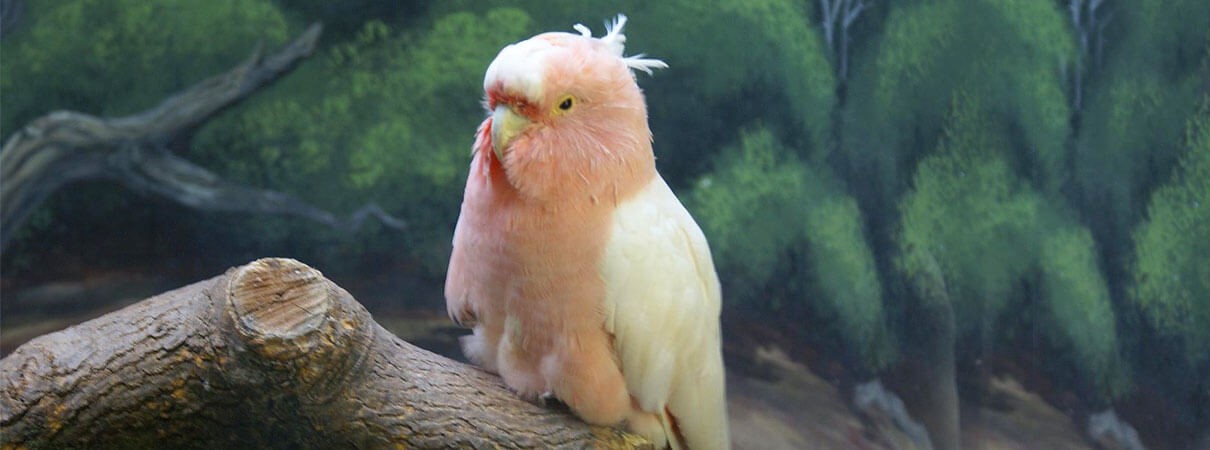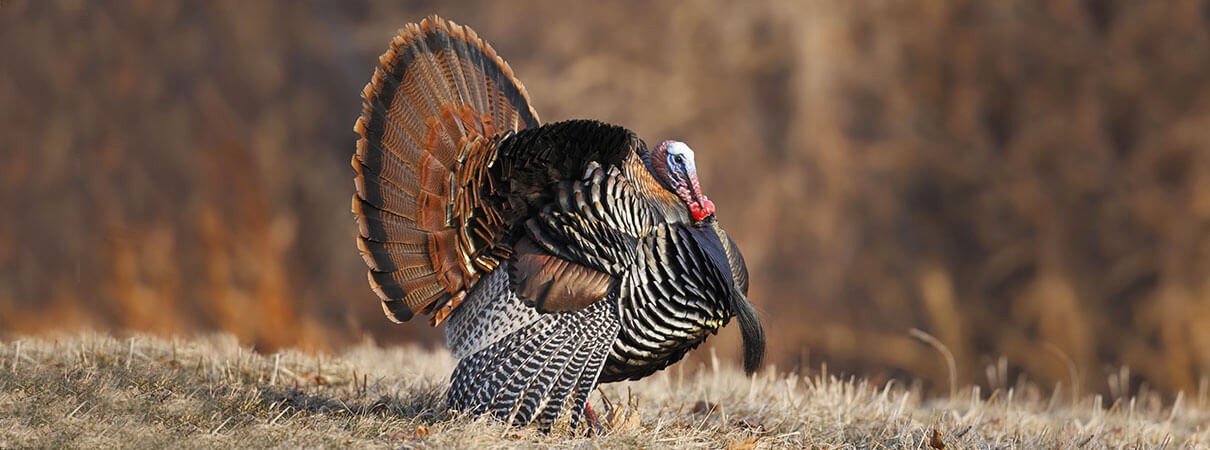Have you ever wondered, “How Long Do Birds Live?” It seems like a simple question, perhaps one for a bird-themed trivia night, but the answer is surprisingly complex. Birds can live anywhere from a few short years to an astonishing century, depending on their species. This wide range sparks curiosity and leads to even more intriguing questions: What accounts for such diverse lifespans? Which birds are the Methuselahs of the avian world? And is it really possible for a bird to live for 100 years or more?
Delving into these questions reveals a fascinating challenge. Determining the age of a bird, especially in the wild, is often an enigma. Unlike many creatures, birds cleverly conceal the passage of time. However, by understanding some fundamental aspects of avian aging, we can gain valuable insights into their lifespans and begin to discern which species among us are likely leading longer – or shorter – lives.
Birds Don’t Age the Way We Do
Humans rely heavily on visual cues to estimate age. Graying hair, stiff joints, and wrinkles are telltale signs of aging in people and many mammals. We see a dog with a grizzled muzzle and a slower gait and know it’s advanced in years. The massive, weathered tree in the park speaks of decades, perhaps centuries, of growth.
Birds, however, defy these aging norms. They don’t develop gray feathers with age, arthritis is not a typical sign of aging, and they don’t grow larger year after year. Unlike trees, they don’t lay down annual growth rings that reveal their age.
Remarkably, once most birds attain their adult plumage, it becomes virtually impossible to determine their age simply by looking at them. This avian secret to concealing age is not fully understood, but scientists believe it’s linked to their efficient metabolism and how their bodies process oxygen and proteins. Research suggests that birds’ cellular mechanisms and metabolic processes may contribute to their extended youthfulness, allowing them to maintain physiological functions longer than many other animals. This lack of visible aging presents a significant hurdle in studying bird lifespans. If we can’t visually age adult birds, how can we possibly learn how long they live?
Unveiling the Mystery of the Oldest Birds
A quick online search for “longest-lived bird” will yield numerous claims of birds surpassing the century mark, some even reaching a purported 120 years! While captivating, these claims should be approached with caution. Verifying such records is challenging because it requires knowing a bird’s hatch date, information rarely available for wild birds. Furthermore, anecdotal accounts, especially regarding beloved pets, can sometimes exaggerate lifespans.
According to Guinness World Records, the most reliably documented oldest bird is “Cookie,” a Pink Cockatoo (also known as Major Mitchell’s Cockatoo). Cookie lived to the impressive age of 83 at the Brookfield Zoo near Chicago.
While Cookie holds the confirmed record, it’s highly probable that some birds have lived even longer in unrecorded instances, potentially reaching or exceeding 100 years. This possibility accounts for the upper limit in the general trivia answer about bird lifespans. However, definitive proof of a true avian centenarian remains elusive.
The Challenge of Aging Wild Birds
As the quest for the “world’s oldest bird” title illustrates, accurately determining bird age, even in controlled captive environments, is difficult. For wild birds, the task is even more formidable. Tracking wild birds presents an immediate challenge. In almost all cases, pinpointing the exact start and end of a wild bird’s life is impossible. Moreover, wild birds face vastly different environmental pressures and life experiences compared to their captive counterparts, potentially limiting the applicability of lifespan data from captive birds to those in the wild.
Our primary source of knowledge about wild bird lifespans stems from bird banding. This technique relies on a simple principle: capturing and placing a uniquely numbered band on a bird’s leg. If a banded bird is recaptured or found later, the band provides a record of its minimum age – the time elapsed since it was initially banded.
However, using banding data to age birds is more complex than it appears. The recapture rate of banded birds is low; only a small fraction are ever encountered again. Furthermore, if a bird is an adult when first banded, its age at the time of banding is unknown, establishing only a minimum age. Despite these limitations, bird banding remains the most valuable tool for gathering data on wild bird longevity and survival rates.
Birds: Long-Lived Relative to Their Size
Despite the difficulties in pinpointing exact lifespans, one clear conclusion emerges: many birds live surprisingly long lives, exceeding expectations based on general animal lifespan patterns.
In the animal kingdom, lifespan often correlates with metabolic rate. Among mammals, a connection exists between body size and metabolism: larger mammals with slower metabolisms tend to live longer, while smaller mammals with faster metabolisms have shorter lifespans. Humans outlive dogs and cats, which in turn live longer than mice and hamsters. (It’s worth noting that these are general patterns, and exceptions exist, such as certain bat species exhibiting exceptional longevity.)
Given their small size and typically high metabolic rates, one might expect birds to be relatively short-lived. However, this is not the case. Instead, many birds exhibit remarkable longevity, especially when compared to mammals of similar size. For instance, a House Mouse, under ideal captive conditions, might live for four years. In contrast, a Broad-billed Hummingbird, a fraction of the mouse’s size, can live up to 14 years in the wild.
Barn Swallows, known for their extensive migrations, have been recorded living for 16 years – enough time to travel roughly half the distance to the moon during their annual journeys. European Goldfinches can reach 27 years. Common Ravens are known to live as long as 69 years, more than double the lifespan of the oldest-known dog.
Similar to their age-defying appearances, the mechanisms behind birds’ exceptional longevity despite high metabolisms are still being investigated. Unraveling these secrets could offer valuable insights into the aging process in general, potentially even shedding light on human aging.
It’s crucial to remember that while birds can achieve impressive ages, not all individuals within a species reach these maximum lifespans. Just as with humans (where the record is 122 years), most birds will have shorter lives than the documented longevity records.
Clues to Bird Lifespan: Identifying Long-Lived Species
While accurately aging individual wild birds beyond their juvenile stage is usually impossible for birdwatchers, we can still develop an understanding of which bird species are likely to be longer-lived based on certain biological and ecological characteristics.
Longer lifespans in birds are often associated with specific aspects of their biology and natural history. Here are five key indicators that can help us make educated guesses about a species’ potential longevity:
-
Body Size: Generally, larger bird species tend to live longer than smaller ones. This aligns with the broader animal pattern linking size and lifespan.
-
Number of Chicks (Clutch Size): Birds with longer lifespans typically have smaller clutches, producing fewer young per breeding season. Conversely, shorter-lived species often have larger clutches to compensate for higher mortality rates.
-
Time to Reach Adulthood (Maturity): Shorter-lived species tend to reach sexual maturity and begin breeding at a younger age compared to longer-lived species, which invest more time in development before reproduction.
-
Habitat – Ground vs. Canopy Life: Birds that live and nest primarily on the ground often face higher predation risks and environmental hazards, leading to shorter lifespans compared to species that inhabit and nest higher up in the relative safety of the tree canopy.
-
Island Life: Island bird populations, often experiencing reduced predation pressure and less variable environments, frequently exhibit longer lifespans than their mainland counterparts. Island habitats can promote slower life histories and increased longevity.
Considering these factors, let’s compare a Wild Turkey and a Red-tailed Hawk. Which do you think lives longer?
Here’s a quick comparison: Turkeys are larger than Red-tails (up to 24 lbs versus 2.8 lbs), have significantly larger clutches (up to 17 eggs versus up to five), reach adulthood faster (one year versus three years), and live primarily on the ground.
If you guessed the Red-tailed Hawk, you’re correct. Red-tailed Hawks have been recorded living up to 30 years, while the oldest documented Wild Turkey lived to 15 years. This example illustrates how these general rules can help predict relative lifespans.
In addition to these biological and ecological traits, another factor influences our knowledge of bird lifespan: research effort. Bird species that have been more extensively studied are more likely to have records of long-lived individuals. Given the challenges of aging birds, especially in the wild, increased study effort enhances the chances of observing and documenting exceptional longevity. This highlights that our understanding of bird lifespans is still evolving, and much remains to be discovered for many species.
Longevity records for some familiar North American birds in the wild (based on banding data from the Patuxent Wildlife Research Center Bird Banding Laboratory):
| Species | Age |
|---|---|
| Mallard | 27 years |
| Elf Owl | 5 years |
| American Flamingo | 49 years |
| Laysan Albatross | 68 years |
| Great Blue Heron | 24 years |
| Bald Eagle | 38 years |
| Sandhill Crane | 37 years |
| Atlantic Puffin | 33 years |
| Great Horned Owl | 28 years |



Consider the table above and see if you can discern patterns in lifespan based on what you know about the size and natural history of these familiar birds. Remember that these are general guidelines, not absolute rules, and our understanding is constantly refined by ongoing research and data collection. For a more comprehensive list of avian longevity records by species, explore the Patuxent Wildlife Research Center Bird Banding Laboratory database.
Longevity and the Imperative of Conservation
The extended lifespans of some bird species have significant implications for their conservation. Longer-lived birds often reproduce more slowly, producing fewer offspring each breeding season and taking longer to reach reproductive maturity. This slow life history strategy means that their population growth relies on individuals surviving for many years to successfully reproduce over their lifetime. Wisdom, the remarkable 69-year-old Laysan Albatross, exemplifies this. She may have raised as many as 36 chicks in her long life. While seemingly numerous, a highly productive female Wild Turkey could potentially produce a similar number of offspring in just one or two years, highlighting the stark contrast in reproductive rates.
The slow pace of life for long-lived birds, like albatrosses and other seabirds, makes them particularly vulnerable to threats, especially in island ecosystems. In island habitats, where many long-lived species evolved with limited natural predators, the introduction of new threats like invasive predators can have devastating consequences. Populations of long-lived birds are less resilient to sudden increases in mortality because their slow reproductive rates cannot quickly compensate for losses.
Organizations like the American Bird Conservancy (ABC) recognize the conservation challenges faced by long-lived bird species. ABC’s work to protect island-nesting birds, such as the endangered Hawaiian Petrel, is crucial for ensuring the continued survival of these slow-paced species in the face of modern threats.
ABC’s broader conservation efforts extend throughout the Americas and beyond, addressing human-caused threats to all bird species, including habitat loss, building collisions, pesticides, and climate change. Your support is vital in helping organizations like ABC achieve meaningful conservation outcomes for birds and the habitats they depend on.
Dr. Steve Austad provided valuable insights for this article. His book, Methuselah’s Zoo, exploring aging in the animal kingdom, was released in 2021.
| | John C. Mittermeier is the Director of Threatened Species Outreach at ABC. He collaborates with ABC’s partners in Bolivia and co-leads ABC’s initiatives on lost birds and bird trade. |